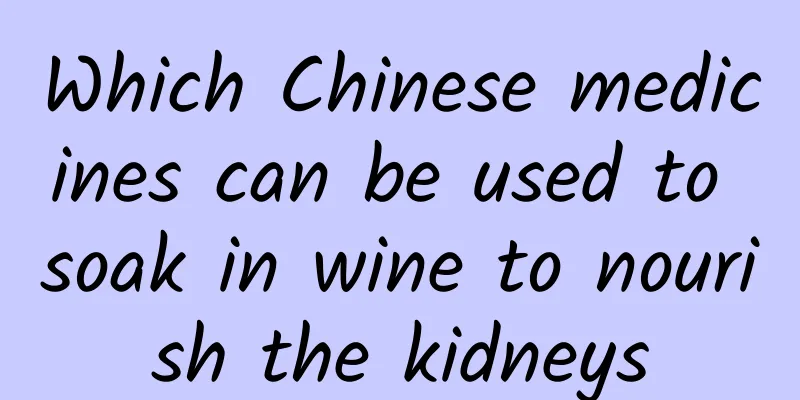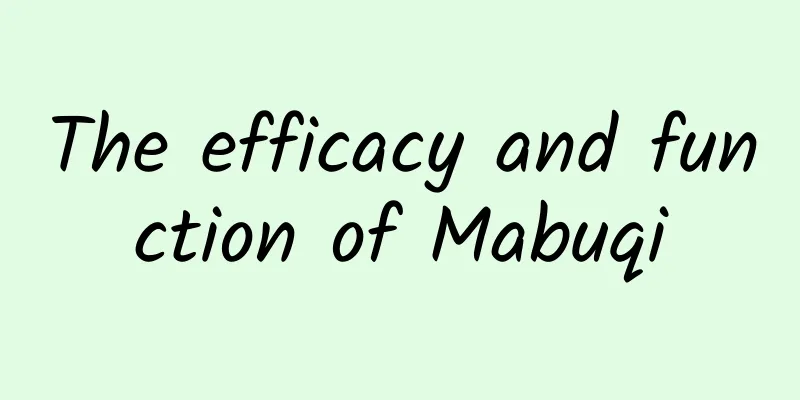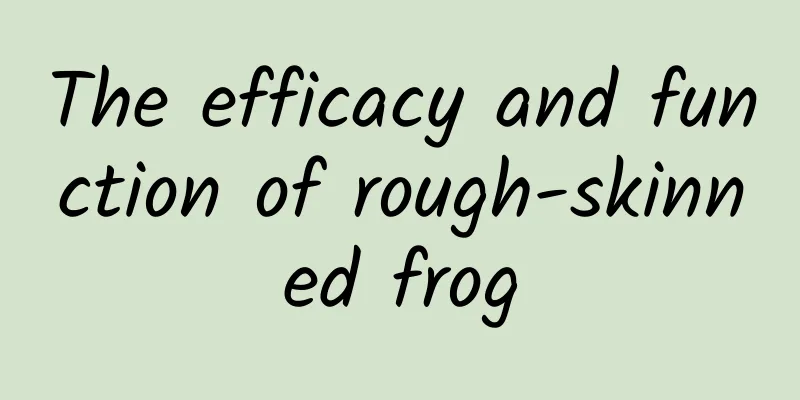Which Chinese medicines can be used to soak in wine to nourish the kidneys

|
The pace of modern life is getting faster and faster, and the pressure on men is getting greater and greater. Many men have symptoms of kidney deficiency. From the perspective of traditional Chinese medicine, the kidney is the basis of essence. Kidney deficiency can lead to decreased male sexual function, decreased body resistance, weakness in the limbs and other adverse symptoms. Male kidney deficiency can generally be treated through dietary and medicinal methods. Using Chinese medicine to make wine is a good way to treat kidney deficiency. So, what Chinese medicine can be used to soak wine to nourish the kidney? 1. Polygonum multiflorum Polygonum multiflorum tastes bitter, sweet and astringent, is slightly warm in nature, and enters the liver and kidney meridians. It has the effects of nourishing the liver and kidneys, and replenishing the essence and blood. It is mainly used to treat deficiency of liver and kidney essence and blood, soreness of waist and knees, spermatorrhea, tinnitus, dizziness, palpitations and insomnia, premature graying of hair, dry intestines and constipation. Wine soaking method: Recipe: 175g Polygonum multiflorum, 15g White Peony Root, 25g Angelica Sinensis, 40g Longan Meat, 60g Rehmannia Glutinosa, 10g Achyranthes Bidentatae, 10g Astragalus, 30g Lycium Barbarum, 75ml Rosa Laevigata Extract (400g Rosa Laevigatae, wash, decoct twice with water, combine the decoctions, filter the filtrate, concentrate to an appropriate amount, let stand for 24 hours, pour out the supernatant, add 80ml rice wine, stir well, let stand, take the supernatant, add water to make 400ml). Method: Add all the medicinal materials to 5L of 37% rice wine, seal and soak for 45-60 days, take the extract, add the golden cherry extract and stir evenly, add 1 part of sucrose for every 25 parts of wine, stir evenly, let it stand, and filter the residue. Oral administration, 10-20 ml each time, 3 times a day. Indications and functions: Tonifies Qi and nourishes blood, replenishes the kidney and benefits the essence, nourishes the heart and calms the mind. Suitable for those suffering from Qi and blood deficiency, liver and kidney deficiency which leads to fatigue, forgetfulness, insomnia, hair loss, vertigo, tinnitus, palpitations, frequent dreams and easy fright, sallow complexion, nocturnal emission, spermatorrhea, and frequent urination at night. Note: Avoid eating pig blood while drinking. 2 Yam Yam is sweet in taste and neutral in nature. It enters the lung, spleen, and kidney meridians. It has the effects of benefiting the stomach and kidney, strengthening the kidney and essence, strengthening the spleen and lungs, improving hearing and eyesight, helping the five internal organs, strengthening the tendons and bones, improving will and calming the mind, and prolonging life. It is mainly used to treat kidney deficiency, premature ejaculation, leucorrhea, weak spleen and stomach, fatigue and weakness, loss of appetite, lung deficiency, phlegm, asthma, cough and other symptoms. Wine soaking method: Recipe: 80 grams of yam, appropriate amount of honey, 500 ml of rice wine. Preparation method: Peel the yam, wash and cut into pieces, take 150 ml of rice wine and boil it, put in the yam, and take it out after it is cooked. Add honey to the wine and stir well. Bring to a boil and remove from heat. Let cool and then put into a bottle. Take once in the morning and evening every day, 10-30 ml each time. Indications and functions: Strengthens the spleen and stomach, consolidates the kidney and improves the essence. It is mainly used to treat insomnia, fatigue, back pain, weak legs, rheumatism, bone pain, spermatorrhea, impotence, sexual dysfunction, and exhaustion after sex caused by kidney deficiency. Note: Do not take this medicine if you have a cough caused by external factors. 3 Eucommia Eucommia ulmoides is sweet, slightly spicy, and warm in nature. It enters the liver and kidney meridians. It has the effects of nourishing the liver and kidneys, strengthening the tendons and bones, and calming the fetus. It is mainly used to treat low back and knee pain, impotence, spermatorrhea, frequent urination, residual urine, dizziness due to hyperactivity of yang, rheumatism, dampness and itching under the genitals, and fetal movement disorder. Wine soaking method: Recipe: 50 grams of Eucommia ulmoides, 20 grams of Epimedium brevicornum, 25 grams of Angelica dahurica, 25 grams of Achyranthes bidentata, 25 grams of processed Aconitum, and 1 liter of white wine. Preparation method: Grind the above medicines into fine powder, put it in a white gauze bag, put it into a clean container, soak it in white wine, open it after 14 days, filter out the residue, and then you can drink it. Take 10-20 ml three times a day, drink warm on an empty stomach before meals. Pregnant women should avoid drinking this drink. Indications and functions: Nourishes the liver and kidneys, strengthens the tendons and bones, removes dampness, and dispels wind and cold. It is mainly used to treat weakness of muscles and bones, weakness of waist and knees, bloating, coldness and pain in the abdomen, and pain in joints throughout the body. |
<<: Can I eat Angelica and Astragalus during breastfeeding?
>>: Is Astragalus membranaceus the same as Astragalus membranaceus?
Recommend
The efficacy and function of the Chanko tree
As a traditional Chinese medicine, do you know th...
During the Qingming outing, you will definitely see them at your feet
The Qingming Festival holiday is here. Originated...
Flowers and bees are a perfect match. What tools do they use to collect nectar?
A bee lands on a flower to collect nectar (Photo/...
What are the complete ways to eat Poria cocos?
Poria cocos is a very common Chinese medicinal ma...
It’s fun to play with your phone while lying down. I loved it before I became blind.
Science and technology are the languages we use...
The efficacy and function of Tuqiannianjian
Tu Qiannianjian is a relatively common medicinal ...
What does a chicken go through before it reaches the table? Watch this and eat a chicken drumstick!
When you are enjoying a chicken drumstick in your...
Why is playing games more addictive than studying? It turns out that dopamine is "controlling" you
...
How did the only city in China named after "flower" achieve a hardcore counterattack?
It is the 60th anniversary of Panzhihua's dev...
Can drinking honeysuckle regularly cure bad breath?
Many people find bad breath when they wake up in ...
Cartoon | @Students, this summer safety guide "pats" you
Summer vacation is coming soon! Every summer vaca...
The efficacy and function of the root of the petal flower
The root of the Pianpetal flower is a Chinese med...
Emei Scutellaria baicalensis's efficacy and function
Nowadays, our living standards are constantly imp...
What are the effects and functions of white Poria cocos
As we all know, Chinese medicine is very popular ...
Incredible! This is how the world looks like to the blind and colorblind...
Reviewers of this article: Tao Ning, PhD, Associa...









